T1D Guide
T1D Strong News
Personal Stories
Resources
T1D Misdiagnosis
T1D Early Detection
Research/Clinical Trials
Carly Lenett: Athlete, Advocate, and Fundraiser, on Eating Disorder Recovery and the New twiist™Pump
Carly Lenett was diagnosed with type 1 diabetes at age three. Fortunately, she had her father, also a type 1, to guide her through the nuances of the disease. And when Carly developed an eating disorder in her early teen years, her father was beside her again to help her through.
.jpg)
The two became a fundraising force, with Team Carly Rocks, raising over $200,000 for type 1 diabetes (T1D).
.jpg)
Here, Carly addresses the often under-spoken struggle of disordered eating with type 1 diabetes (T1D) and offers other young girls hope.
Research shows that young people with diabetes—especially girls—are more likely than their peers to develop disordered eating behaviors, and boys are also vulnerable.
Eating Disorders and Type 1 Diabetes
Breakthrough T1D (Formerly JDRF) cites that T1D can easily coincide with disordered eating behaviors, and even include anorexia, bulimia and bingeing. With mounting pressure surrounding food monitoring, carb counting, and healthy eating, combined with societal and social media expectations to look a certain way, diabetes care can be overwhelming.
Carly said she often compared herself to the unrealistic expectations found online, and discovered an easy way to lose weight—restrict insulin. She added that there were no resources for her at the time to address this problem. “I think more awareness is needed.”
The condition, sometimes called diabulimia, is an informal term used to describe when people with type 1 diabetes intentionally restrict insulin to lose weight.
She went on to say, “I’m really open about it now. I don’t want to keep it to myself if I can help other people. I was 13 or 14 when the body image concerns about weight happened. Most girls go through it at some point, but I had diabetes, and had a tool to lose weight with no effort."
Carly had multiple ER visits through the years, but they don’t address the underlying mental health disorder, Carly’s father, Mitch Lenett, told T1D Strong.
“If a doctor knew right away that I might have been restricting insulin, I would have gotten treatment sooner,” said Carly. “I think girls should be educated, but it’s kind of a double-edged sword, because you don’t want girls to get the idea, but also they should know what diabulimia is and what restricting insulin does and how it’s very dangerous.”
When someone with type 1 diabetes deliberately restricts insulin, glucose can’t enter the body’s cells for energy. The cells essentially starve, so the body starts breaking down fat for fuel, producing ketones. As the ketones build up in the blood, they create a dangerous acidity that leads to diabetic ketoacidosis (DKA), a life-threatening condition that may result in coma or death.
Unfortunately, the habit of restricting insulin led to Carly losing a great deal of weight. “It was very unhealthy; I was restricting my insulin and losing weight rapidly. I felt very sick all the time, and I was sick; I looked sick. It kind of happened pretty quickly.”
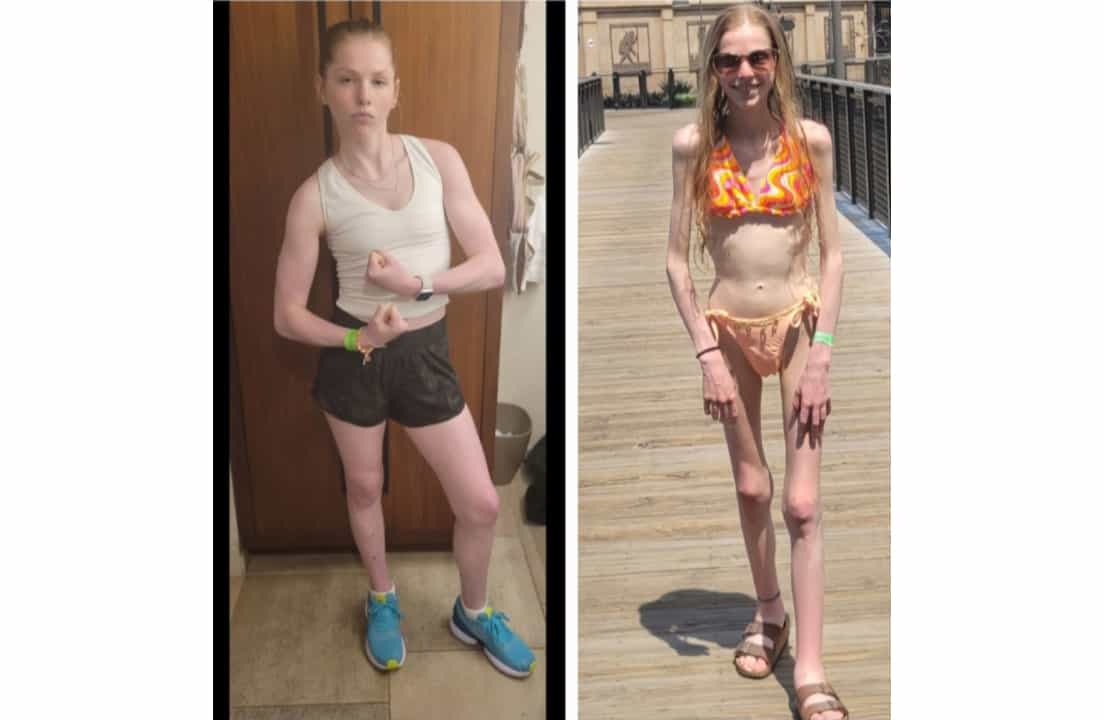
Finally, Carly found the help she needed at the Melrose Center in Minneapolis, MN, an eating disorder treatment center where she spent 13 weeks in recovery. “When I went there, I was really sick at that point. I just let myself go; I couldn’t really fight for myself. I wanted to get better. I let the people around me support me. It was really scary. I was away from home, but I still had a lot of support from my parents, and the people at the center were great.”
“Eating disorders and diabetes are two different things that feed into each other,” Carly said. “It’s not talked about or studied. The Melrose staff didn’t understand some aspects of diabetes, but they helped me get better.”
“If it’s talked about and recognized, then ultimately it will be way more helpful,” Carly added.
Today, Carly said she would tell her younger self that life is beautiful. “Try to have a more positive outlook. I felt like I had to change my body, but that wasn’t the truth. Growing up, being healthy, and having the ability to have a baby are such beautiful things.”

The Dangers of Food Noise
Food noise is synonymous with the mental chatter and preoccupation with food that can disrupt daily life and lead to problematic eating. The Cleveland Clinic reports, “It’s not a medical diagnosis, but a concept where feelings of hunger can override normal body cues triggered by biological factors like hormones and stress.”
“I felt very hungry, and then I felt like I had to restrict my insulin, but why did I feel so hungry?” Carly asked. “Often with chronic illnesses, your appetite increases, so we had to think about what would prevent that, and so that means managing your appetite, maybe a medicine that helps with that or finding a tool that may not be conventional or understood by many people. I had no resources, I had to teach myself and save my life.”
“I think if I had known what food noise was when I was like 14 or 15, if I would have known that that was a thing that was fixable,” Carly said. “It’s just so crazy because so many people do have food noise, and not even people with illnesses, a lot of people have it, and they don’t even realize it."
Team Carly Rocks Foundation
Helping others with type 1 has been a lifelong mission for Carly. In 2016, with the help of her parents, she founded the Team Carly Rocks Foundation, a 501(c)(3) organization to raise funds for diabetes research and to help children attend diabetes camps.
During her first fundraising event, she swam 100 laps and overall, the organization has raised over $200,000. “That’s special to me because I know that I did that for people and that feels really good.”
Through the years, the foundation partnered with T1D Exchange, and type 1 celebrities like musician Bret Michaels, lead singer of the rock band Poison. “He’s the sweetest guy, he really cares about me, and treats me like one of his daughters.”

Another supporter of Carly’s is Olympic silver medalist, Kristy Kowal, the former world champion breaststroker who made history as the first American woman to break the one-minute barrier in the 100-yard breaststroke and another Olympian swimmer, Gary Hall Jr., a 10-time medalist (five gold, three silver and two bronze), who’s well known for his diabetes advocacy.
“The most exciting part was being friends with Olympians, swimming with them, and fundraising,” Carly said. “Gary Hall Jr. flew from China once to attend one of our Carly’s swim events.”
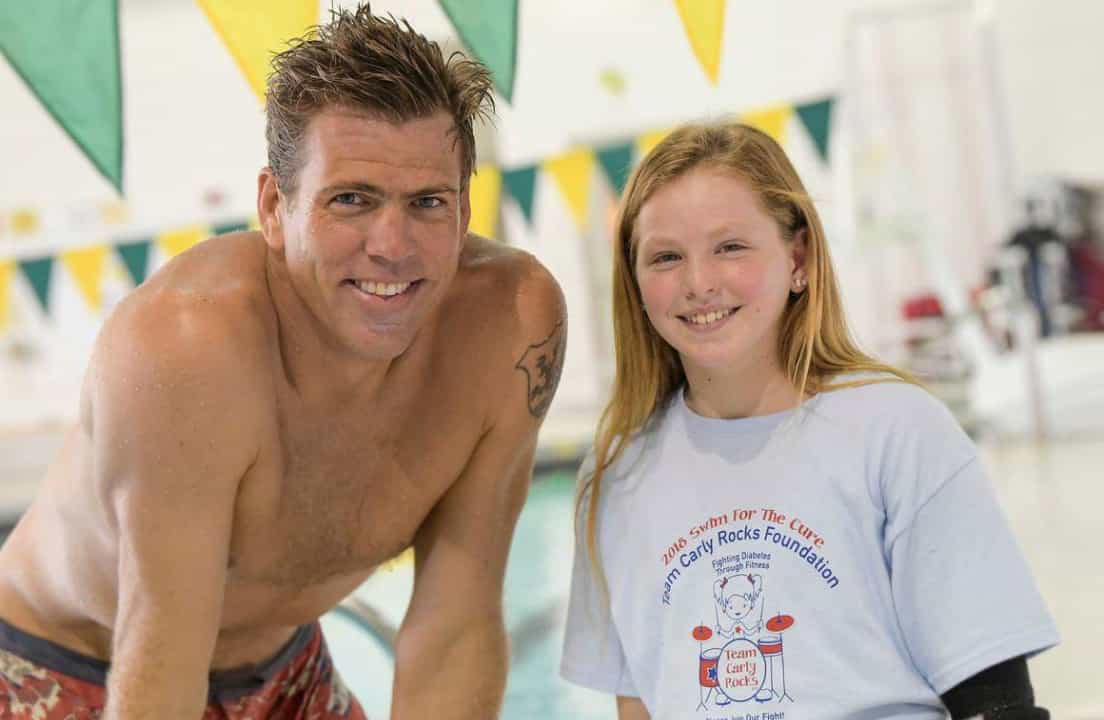
twiist AID advantages
Carly’s now on the twiist pump. Always open to new advancements in the T1D tech world, she patiently waited for the new twiist AID System, a breakthrough in automated insulin delivery (AID) that brings several advantages to type 1 diabetes management.
“It’s very new, I’m in a small group, and we’re the first ones to use it. I’ve only had it for a few weeks, but the support is amazing. Any equipment that fails, they get it to you immediately.”
The new system, which received FDA clearance in March 2024, had its commercial rollout in July 2025.
“It’s much smaller, circular. It has a clip and a cord. It constantly makes changes in response to user suggestions. I put my insertion site in my leg right now,” she said.
Besides being compact and lightweight, the twiist offers the widest correction range of any AID system on the market, with customized targets from 87 to 180 mg/dL. It’s controlled via an iPhone app, with optional Apple Watch control.
“So basically your pump is your phone. I’m very serious about portable chargers, as I always want to have my phone charged. It just gives you insulin based on your CGM numbers. It uses that number to constantly predict where you’re going to go, like every five minutes, and it adjusts insulin frequently.”
“If you eat less or more of what you bolused for, it will quickly adjust. It’s cute for kids – you enter the type of carbs (there’s a lollipop for candy, tacos for protein, and one for pizza, because that’s a hard one, as everyone has trouble with that).”
Right now, she’s wearing Abbott’s FreeStyle Libre 3 Plus sensor, which is the officially supported CGM for twiist. However, an upcoming expansion is expected with the Senseonics Eversense 365 implantable CGM.
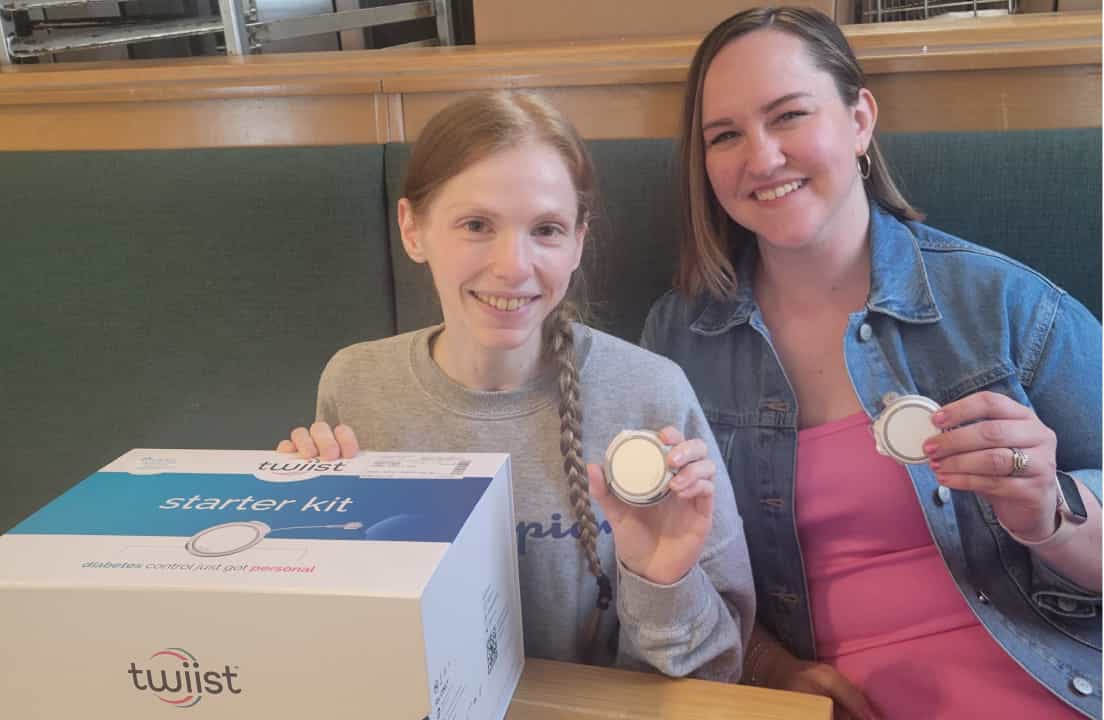
Other twiist perks:
The twiist Loop is built on the Tidepool Loop algorithm, a community-driven technology that has earned wide praise within the diabetes community. It predicts glucose trends every five minutes and adjusts basal insulin or recommended correction boluses.
It includes customized pre-meal and workout presets that anticipate meals and activity.
“The twiist can adjust, and so you don’t have as severe a low reaction. It senses where you’re going. It’s kind of cool, and I’m okay with being a test subject. I wanted this pump so really bad, as soon as I heard about it,” said Carly.
“Another cool thing about Twist is that it detects occlusions like 10 times faster than other pumps (blockages in the line). I started getting alarms, and I think the older pumps don’t detect them as much. You could be sitting on it or just have it in a weird position, and it detects that.”
The Breakthrough iiSure™ Occlusion Detection detects insulin flow blockages up to nine times faster than other AID systems.
A Father/Daughter T1D Bond
After Carly’s diagnosis at age three, the family has made a ritual of attending the Children With Diabetes’ Friends for Life Conference in Orlando, Florida. “There are no years where we haven’t gone. It’s just a great experience for families. I was in good hands with my dad, who had diabetes. I can’t imagine doing it alone. At FFL, we saw other families who had to learn.”
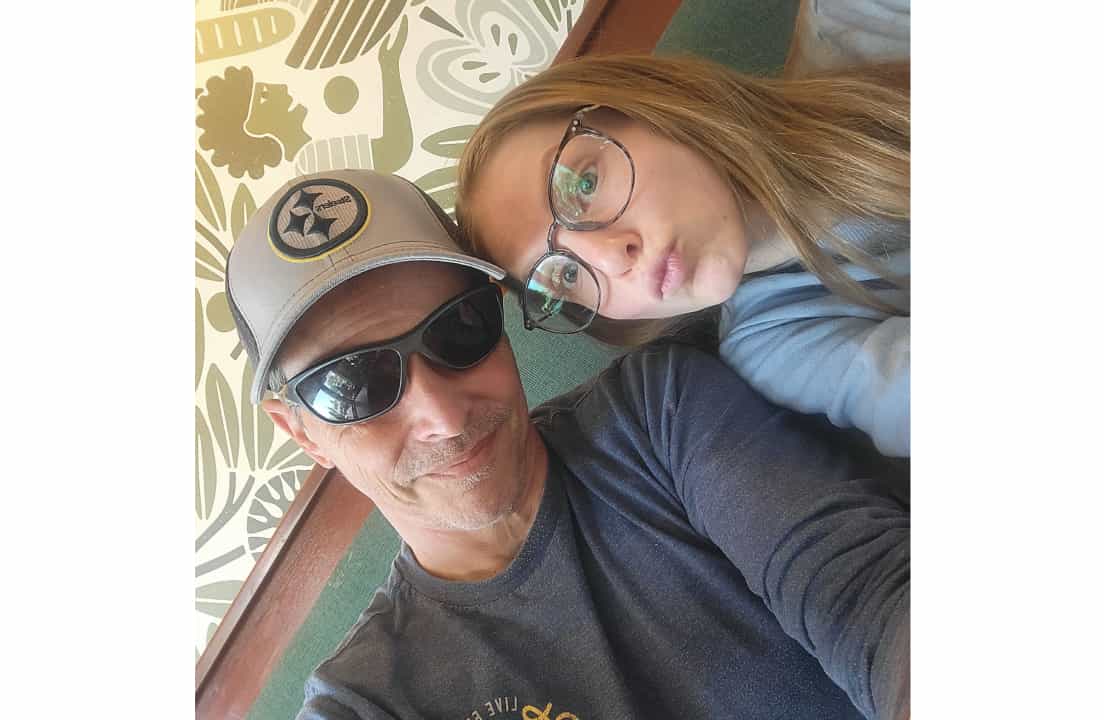
My dad inspires me. He’s had diabetes for so long, and that gives me a lot of hope because it’s scary. I don’t know what it would be like to grow up without a person in my family with diabetes. I didn’t really appreciate that until I was older.”
Her dad, Mitch, confirmed. “We have a special relationship, it’s kind of indescribable. It’s definitely something special and we don’t take that for granted.”

Guidance for Newly Diagnosed T1Ds
When asked what advice she would give to someone newly diagnosed, Carly said, “Numbers are just numbers. Don’t freak out. If you have a high number or low number, just treat it and move on.”
Carly, who is currently in college, studying English and psychology, said she could see herself working in healthcare advocacy, combining mental health and diabetes management. “Mental health and chronic illness awareness didn’t seem to exist when I was growing up. Someone like me could have really used that.”
She has kept a journal throughout her experience and hopes to write a book someday to help others who may be facing similar issues. But for now, she’s still growing and healing. “I’m not going to say I’m fully recovered, but I can heal, and I can manage my life in a healthy way.”
For guidance and resources, reach out to the National Eating Disorder Association (NEDA) for information.


.webp)





.webp)

.jpeg)
.jpg)


.jpg)
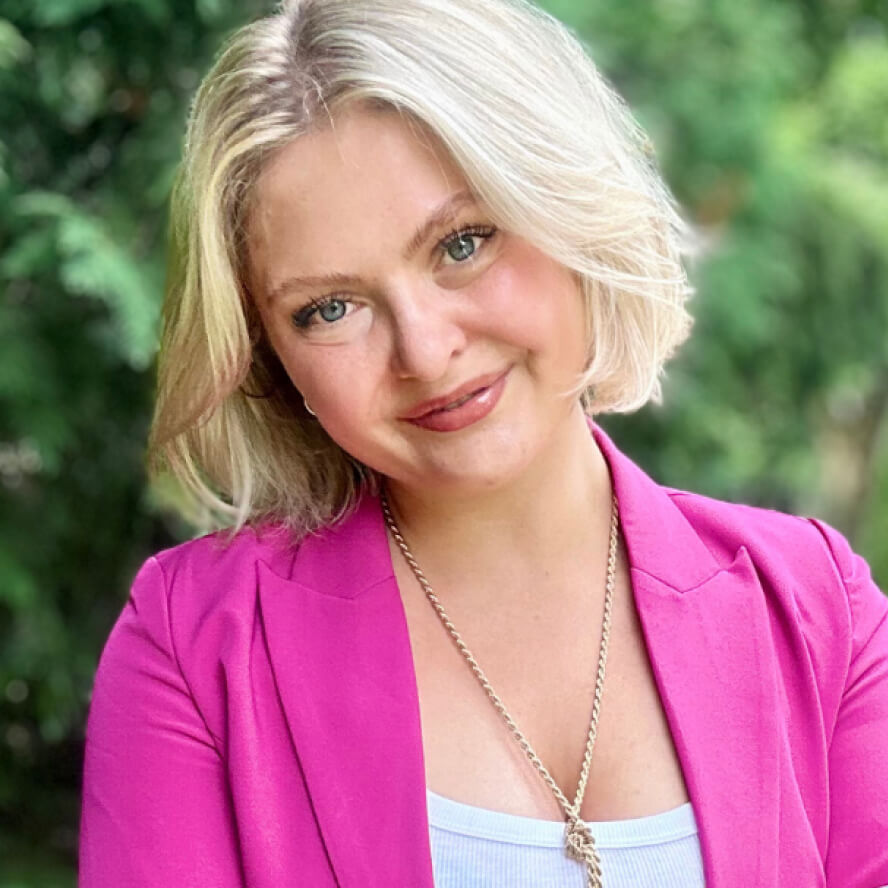
.jpg)


.jpg)

.jpg)
.jpg)


.jpg)

.jpg)
.jpg)
.jpg)
.jpg)
.jpg)

.jpg)
.jpg)
.jpg)
.jpg)
.jpg)
.jpg)

.jpg)
.jpg)

.jpg)
.jpg)
.jpg)

.jpg)
.jpg)


.jpg)
.jpg)
.jpg)













.jpg)


.jpg)













.webp)





%20(1).png)




.jpeg)






.jpg)




















.webp)